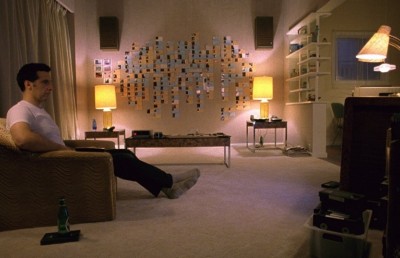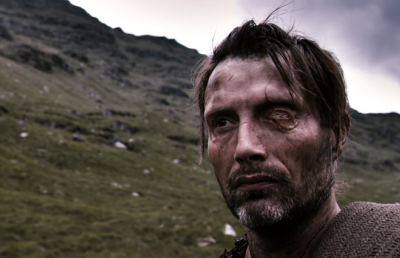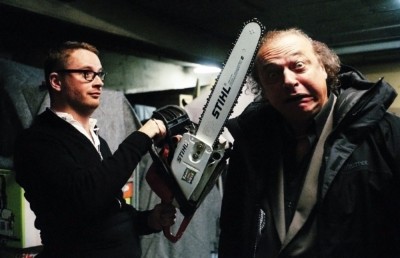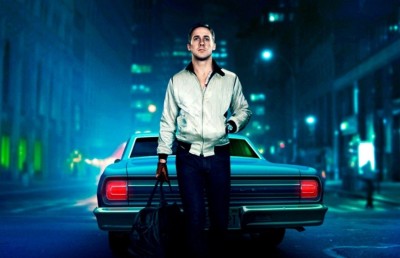“Can’t Fucking Act”: Bronson and the Art of Performance
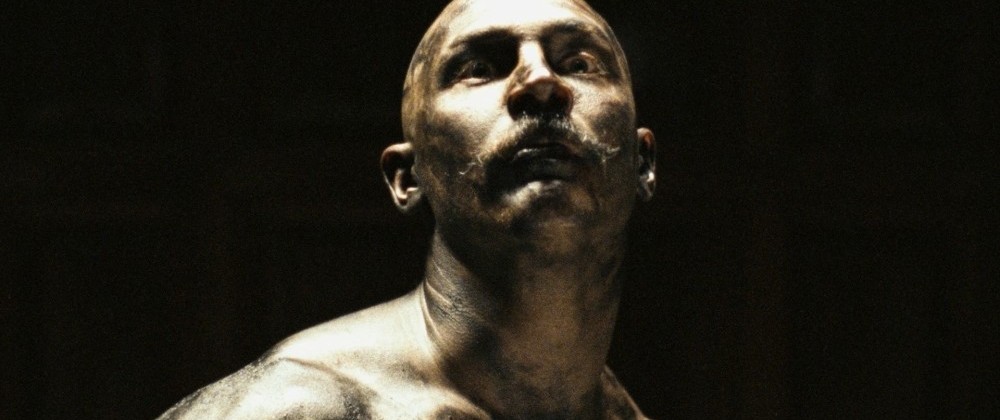
Regarding his 2008 pseudo-biopic Bronson, depicting the life and captivity of Britain’s most famous – and violent – prisoner, and the changes he made to the original script, director Nicolas Winding Refn states:
I thought: “What if we turn it on its head? What if it’s about a man who doesn’t want to get out of prison, but wants to stay in?” Rather than fill his life with generic British-underworld clichés, it is much more fascinating to make his life like a carnival, because Charles Bronson is not a gangster or a criminal or anything like that; in my movie he’s an artist searching for a stage on which to create his performance. (Corless 15)
Thus, Refn’s goal was not to make a factually accurate, historically-based biopic – à la Malcolm X or Ray or any of the other eponymous Oscar bait released over the years – but instead a figurative and thematic representation of the titular character’s thoughts, feelings, and hopes. As Catherine Wheatley, in her Sight & Sound review observes:
Any spectator misguided enough to wander into Bronson expecting a run-of-the-mill biopic about an all-American action hero will be in for a nasty surprise. For Nicolas Winding Refn’s latest venture is in fact a series of strung-together flashpoints in the life of Britain’s self-dubbed ‘most notorious criminal’ – and it is as brutal and demented as the man himself. Bronson explodes off the screen as a terrifying, exhilarating maelstrom of hyperstylised violence and extreme theatricality set to a rampaging score of Wagner and Joy Division. (51)
Charles Bronson (née Michael Peterson) is a nasty, violent, exaggerated figure, and thus the film brandishing his name is appropriately congruent.
Refn therefore utilizes many cinematic tricks and formal devices to create his aesthetically excessive work, ranging from evocative cinematography to the inclusion of documentary footage to an ironic use of music. But the backbone of the film is the performance at the heart of it – Tom Hardy’s portrayal of the titular figure. Perhaps best known before the release of Bronson as the villain Shinzon in Star Trek: Nemesis, Hardy is a classically trained British thespian and former model, who began his career in 2001 with parts in Steven Spielberg’s World War II mini-series Band of Brothers and Ridley Scott’s war action drama Black Hawk Down. He was also featured, prior to 2008, in Matthew Vaughn’s Layer Cake, Sofia Coppola’s Marie Antoinette, and Guy Ritchie’s RocknRolla – in which he played the part of gay gangster Handsome Bob, an important precursor to Bronson – as well as in a whole host of British TV mini-series and movies. But it was Bronson that truly put him on the map internationally, leading to key roles in Christopher Nolan’s Inception, Tomas Alfredson’s Tinker Tailor Soldier Spy, John Hillcoat’s Lawless, and, most notably, Nolan’s conclusion to his Batman trilogy, The Dark Knight Rises, in which Hardy embodied the menacing and intimidating arch-villain Bane. In each of these films, Hardy exhibits a rare combination of brawn and brains, mixing raw physical prowess with a delicate sensitivity afforded him by his classical training, but perhaps nowhere is this more apparent than in Bronson. As Refn says, when asked why he chose Hardy for the role:
I looked at every young actor in England, but it became apparent that Tom was the best choice. It turned out he’d been working on this role for many years. He was friendly with Charles and able to meet him. We came at it from our own angles, but the one thing we had in common was that we wanted to make him human. Tom reminds me of the Danish actor Kim Bodnia; he’s a powerhouse of an actor. It was a plus that he is theatrically trained, because he was able to access all these different sides of Bronson. I can’t think of any other British actor who would physically go through what he did. And playing half the movie naked is a very vulnerable state to be in for an actor. I felt that was extremely brave of him (Corless 15).
Hardy’s performance in Bronson is thus a perfect example of a director’s intentions and an actor’s abilities combining to craft a substantial, dimensional, and magnetic character; in this case, he just also happens to be ultra-violent and psychotic.
And Hardy’s monstrous performance is, indeed, the showstopper of the film. Equal parts hilarious, terrifying, and impressive, it is a true star-making turn – one that launched him onto Hollywood’s radar, as well as serving notice amongst the critical community. Jonathan Romney, in Film Comment, called it “thunderously eccentric” (28), Chris Chang, for the same publication, said, “it’s a Method turn so bloodily immersive it’s hard to imagine the actor getting his head straight afterwards” (72), and J. Hoberman, formerly of The Village Voice, observed, “with his shaved head, handlebar mustache, and mighty physique frequently stripped down for action, Hardy’s Bronson resembles a sideshow strongman – he also serves as the ringmaster and chief clown in the brawling three-ring circus that is Refn’s movie” (40). It is this last quote that is most significant, for it is not just the performance itself, but also the way Refn places and utilizes it within the framework of his film, which is most important to the meaning of Bronson. Notably, the film’s external structure is that of Charlie Bronson telling his life story to a captive (figuratively, not literally) and engaged audience, acting out various events, narrating others, all the while performing on stage with the gusto and showmanship of a, in Hoberman’s words, circus ringmaster. He laughs maniacally, he yells wildly, he alternates voices and accents and intonations, but he is always acting, always performing, always pretending to be more than he is – a violent, psychotic criminal. You might even say that Tom Hardy is not simply portraying a character, but portraying a real-life person playing a character – Hardy playing Peterson playing Bronson, as it were. And this is truly the crux of the film’s purpose and meaning, for Hardy’s performance crosses the line from mere impersonation and becomes a kind of meta-act, expressing the character’s internal thoughts, feelings, and desires, rather than his actual actions. Bronson is a complex, dangerous figure, and thus only a film as self-involved and variable as this can fully capture the depths of his madness – and brilliance.
As mentioned, ??Bronson??’s framework is that of the titular character narrating his life story, both to the aforementioned diegetic audience and to the non-diegetic viewer via voiceover. The film opens with Bronson speaking directly to the camera, in front of a black backdrop, and stating, simply, “my name’s Charles Bronson, and all my life I’ve wanted to be famous.” With this stark opening line, Refn indicates his protagonist’s inherent glory-seeking nature early, but, furthermore, the openness and frankness of the statement – addressing the camera, and thus the viewer, straightforwardly and face-to-face – is highly self-aware and self-reflexive, breaking the mould of the usual, detached biopic. Bronson is clearly conscious of his audience, a sentiment confirmed by the follow-up shot, showing his hulking figure from behind, standing awkwardly on stage and lit by a single spotlight, in front of a darkened room full of barely-visible spectators. This reversal identifies us, the viewers, as the diegetic audience witnessing this stage performance, and firmly situates the film within the realm of meta-fiction. For Bronson, aware of the audience and, by extension, the camera, is clearly acting out and performing for both, making his voiceover highly dubious and subject to questioning. His continuing monologue, spoken by Hardy in a distinctly lower-class British accent, nonetheless furthers his characterization. “I knew I was made for better things,” he states, over various single shots of himself staring off into space, sometimes in the direction of the camera. He continues: “I had a calling. I just didn’t know what it is. Wasn’t singing. Can’t fucking act. Kinda running out of choices, really. Aren’t we?” The working-class accent, incorrect grammar, and slang terminology used by Hardy clearly defines Bronson as an uneducated and unsophisticated simpleton, but what he is saying is perhaps even more important that how he is saying it. Bronson wants to be famous, but “can’t fucking act”; seemingly, his stage performance is thus a kind of wish fulfillment on the film’s part.
Bronson’s voiceover continues throughout the film, narrating the important events of his life (his upbringing, his marriage, his imprisonment, etc.) for the benefit of the viewer, but only occasionally does Refn return to the Brechtian audience and spotlit stage. As such, the performativity in Hardy’s interpretation is highlighted, but not overdone. The next instance occurs, chronologically, just after Bronson’s first incarceration – seven years for armed robbery. At first, it appears as though he reacts the same way anyone else would to an extended prison sentence – sobbing deeply in his jail cell, his back to the camera. But this is revealed to be a ruse, as, when Refn cuts to a front shot, Hardy whisks his hands away dramatically, unveiling white facepaint and matching gloves – the stereotypical get-up of a mime. Clearly, Bronson is taking his performance rather literally. As the audience laughs, the mime orates: “Had you going, didn’t I? Go on, I had you going,” he asks, cheekily, grinning all the while, before declaring, “I’ve always fancied myself a comedian,” further emphasizing his life-long desire to entertain. Though the mime makeup seems at odds with his verbose personality, at least superficially, it is perfectly representative of Bronson’s self-proclaimed fame-seeking and performative nature. For Charles Bronson – at least the cinematic version, portrayed by Tom Hardy – is a man primarily concerned with appearances, reputation, and celebrity, and, as such, Hardy imbues his performance with style, flash, and pizzazz. But since this is also a performance of a performance, in a way, Hardy includes elements of irony, sarcasm, and self-awareness in his portrayal. In this sense, it is truly meta.
One of the prime examples of this comes later in the film, when Bronson explains, in his words, ‘what happens when murder goes wrong’. At this point in the chronology of his life, Bronson has been moved from prison to prison, bringing nothing but rage and violence wherever he goes. Finally fed up with his savage and psychotic behaviour, the British government decides to send him to a mental hospital – or ‘funny farm’, as Bronson calls it – to be drugged, doped up, and dealt with. Bronson – having enjoyed very much his various jail stints, and not so much his newly drugged-out existence – hatches a plan to escape; namely, by strangling one of his fellow ‘loonies’ to death, thus (hopefully) returning him to prison. Instead, though, as an administrative bureaucrat informs Bronson, his potential murder victim does not die, and thus Bronson is, instead, transferred to Broadmoor Asylum for the Criminally Insane. Rather than show this conversation in the conventional sense – i.e. a dialogue scene between the two characters, likely utilizing shot/reverse shot – Refn takes the unconventional, and more appropriate route – Bronson himself acts out both sides of the conversation. Alternating between playing himself and the bureaucrat – the latter persona utilizing white facepaint, black greasepaint, and painted nails on the left side of his body to distinguish the character – Bronson re-enacts the entire exchange as he remembers it. Standing on the spotlit stage, showing only one side of his face at a time to the audience, Bronson thus flips between the two personas, essentially talking to himself as he performs the re-enactment, eliminating the need for the overused shot/reverse shot structure. It is a highly theatrical and dramatic moment, capped off by Bronson’s bow to the audience (to raucous applause) at the conclusion of his act; thus, this is perhaps the most explicit example of Bronson’s performativity throughout the entire film, as it showcases his charisma, his showmanship, and, above all, his desire to perform.
Following this theatrical re-enactment, Bronson, cackling as he does so, introduces a documentary film playing on a screen behind him, entitled (in his words) Charlie vs. Broadmoor. But, of course, he is not content to merely let the movie run; no, Bronson has to add his own personal take on the footage. And personality is precisely what he adds: while the silent documentary, depicting a prison riot, plays in the background, Bronson excessively and histrionically performs a short cover of the 1975 David Cassidy song “When I’m a Rock and Roll Star,” silhouetted in front of the screen and now wearing white facepaint and black greasepaint over his entire head, not just half of it. Furthermore, a painted lightning bolt adorns the right side of his face, completing the glam-rock image. As the footage shows the riot being suppressed by police, Bronson finishes his brief musical interlude, to the obvious delight and raucous applause of the audience. Though only a abbreviated version of the song, it nonetheless further expresses and explains Bronson’s complicated desires and complex mind. The meaning of the lyrics, both in the original version and this over-the-top cover, is clear: the singer dreams of becoming a rock ‘n’ roll star, and the fame, fortune, and glory that comes with it. The connection with Bronson’s desires is obvious, and it is clear why he chooses such a song to perform to the audience. But it is not simply what he performs, but how he performs it, that makes this brief scene so important. With his arms gesticulating dramatically, his lips moving excessively, and his voice singing deeply, it is a musical performance of truly superfluous and outrageous quality, thus representing both Bronson’s theatrical personality and the showy nature of ‘70s rock music in England. Bronson, too, dreams of becoming a rock ‘n’ roll star, and his extravagant rendition of the song captures his mindset perfectly.
Although ??Bronson??’s narrative is not structured in the classical sense, with a forward-propelling plot rising and falling from exposition to climax to dénouement, there nonetheless remains somewhat of a climactic scene at the conclusion of the film, as Bronson’s self-told story comes to a close. It is in this crucial moment that Bronson finally realizes his full artistic potential, albeit in a manner quite unlike he (or anyone else) had expected. At this point in the film, Bronson has been released from prison, made his name as a bare-knuckle boxer, and been re-arrested on armed robbery charges; back in prison, as part of his attempted rehabilitation, the warden enrols him in art classes, attempting to curb his primal instincts and violent temper. At first, Bronson shows an aptitude for the class, determinedly drawing and colouring; however, when his effeminate art teacher comments that his work is ‘interesting’, Bronson takes offence, and eventually makes the teacher the next victim of his deranged mind. Holding him hostage in the classroom (to the cheers and laughter of the off-screen, but apparently still present, audience), Bronson proceeds to decorate the art teacher as if he were a statue, utilizing the threat of violence to hold him still; using paint and props, Bronson makes up his teacher to look like Salvador Dalí and sticks an apple in his mouth, as if he were a pig on a spit. To complete the exercise, Bronson covers himself in black greasepaint and poses dramatically on a staircase, looking quite like an ancient Greek statue himself. As he completes his masterpiece, he comments, “oh yeah, that’s a fucking piece of me!” ironically turning the art teacher’s advice, to “find that piece [of himself] that doesn’t belong,” against him. With this final act of showmanship and performance, Bronson truly makes his name as Britain’s most violent prisoner, and, at last, achieves the fame and glory he has so long craved.
Although Tom Hardy’s performance as Charles Bronson in the film of the latter’s name has much in common with the typical biopic interpretation – including physical alteration, voice modification, and personality adaptation, to name but a few – Bronson is far from a typical biopic, and thus Hardy’s overall performance is not restrained by the limits of impersonation. Though he gives it his all in adapting Bronson’s characteristic accent and hulking frame, Hardy also injects elements of irony, humour, and excess into his rendition, turning his Bronson from a mere impression into something more. In conjunction with director Nicolas Winding Refn, Hardy attempts to portray Bronson not as the man he is, but the man he wishes he was – entertaining, charismatic, and outrageous. As such, the film contains numerous scenes where Bronson literally performs on stage for a watching audience, breaking the fourth wall for the viewer and giving the film something of a Brechtian vibe. Furthermore, he utilizes a grab bag of performance tricks to win over the audience, whether diegetic or not; he sings, he dances, he wears makeup and argues with himself, but, most of all, he performs. Although Bronson says in his opening monologue that he “can’t fucking act,” his stage show seems to counter this; thus, the film seems to be presenting not Bronson’s real-life character and personality, but his imagined hopes, desires, and wishes. And with Hardy’s performance, which breaks the bonds of biopic impersonation and becomes a meta-portrayal, Bronson is able to present a kind of wish fulfillment for its protagonist. It is unknown whether the actual Charlie Bronson loves performing and entertaining an audience, but this hardly matters; what is important is that the cinematic Bronson does, and Hardy’s representation, more than anything else, makes this happen.
Works Cited
Chang, Chris. “Short Takes.” Film Comment 45.5 (Sep. 2009): 72. Print.
Corless, Kieron. “All the World’s a Stage.” Sight & Sound 19.4 (Apr. 2009): 15. Print.
Hoberman, J. “Merry Pranksters.” The Village Voice 54.41 (Oct. 7, 2009-Oct. 13, 2009): 40. Print
Romney, Jonathan. “Hard Men.” Film Comment 46.4 (Jul./Aug. 2010): 26-29. Print.
Wheatley, Catherine. “Bronson.” Sight & Sound 19.4 (Apr. 2009): 51. Print.


